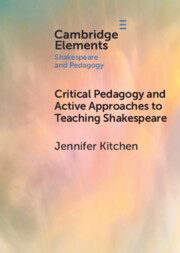Element contents
Critical Pedagogy and Active Approaches to Teaching Shakespeare
Published online by Cambridge University Press: 14 November 2023
Summary
- Type
- Element
- Information
- Online ISBN: 9781108874656Publisher: Cambridge University PressPrint publication: 07 December 2023

